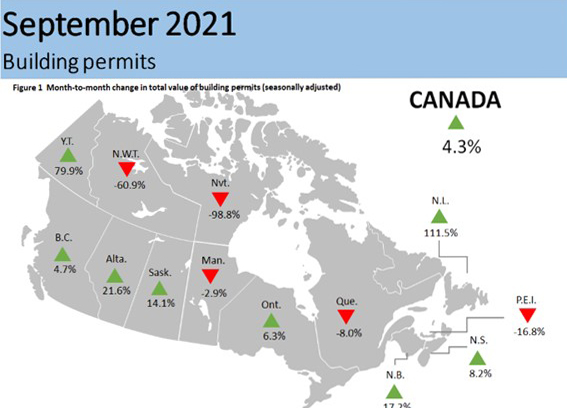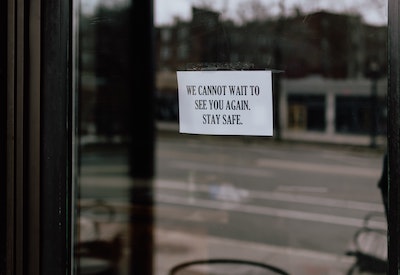A Year with Networked Lighting Control

Jan 10, 2022
Lighting controls are devices and systems that support visual needs and energy management. Over the past 20 years, the general trend has been toward greater sophistication and abilities. In the last decade, the technology underwent a revolution as extraordinary as the shift from traditional to LED lighting.
Today, lighting controls offer significant value. The ultimate in lighting control is a centralized networked lighting control system, which has been shown to reduce energy consumption by an average 47 percent. In new construction, it can readily justify itself based on energy savings and other benefits. In existing buildings, despite its value, it becomes more challenging due to the size and cost of the usually commensurate LED load being controlled, unless rebates are available.
As a result, the conversation around centralized networked lighting control is changing. While traditionally, lighting controls were touted and accepted as energy-saving solutions, saving energy is only part of the value proposition around today’s most advanced solutions. With new capabilities such as color control and data, the value proposition has expanded to include wellbeing, data that can be used to improve operations, and location-based services.
A challenge remains, however, which is translating these capabilities to one’s applications. What could be done with greater lighting control in my building? How is the system operated to save energy while deriving other benefits specific to my applications? How could the data be used to benefit my stakeholders?
To answer this question, this article, based on a new Lighting Controls Association Education Express course by C. Webster Marsh, looks at three theoretical applications. By making them theoretical, we can fully examine capabilities realized over a given year, while penetrating deep into building operations. This approach may help readers visualize what such a system can do for them, enabling them to derive benefits from advanced lighting control that go far beyond energy.
Networked lighting control
Before we begin, it is useful to define exactly what we mean by centralized networked lighting controls.
Networked lighting controls are intelligent (computing-based) systems in which devices communicate within a network to enact control strategies. On the network, each control point has its own unique address, which can be assigned to control strategies and schedules individually or in groups. This type of solution can be desirable for complex, layered strategy implementation, software-based zoning and rezoning, and simplified wired or wireless connectivity.
Typically, these systems are factory-configured with energy code-compliant sequences of operation and implemented at the room level. The intent is virtually to install and forget, which can be effective. In medium-sized and smaller projects, this decentralized approach is quite common. In larger projects where a skilled operator can operate the software, centralizing the system at the building level can produce significant additional capabilities such as measuring and monitoring, ongoing management and tuning, location-based services, and a path for building systems integration.
An interesting facet of this is data. By centralizing the system, all sensor and energy data is fed to a server or the Cloud for analysis via software. Measuring and monitoring enables highly detailed energy information, automated system response, automated maintenance alerts, and generation of data beyond lighting, such as occupancy that can be used for new value-added services such as space utilization. By adding Bluetooth nodes to luminaires, we also gain the potential for indoor positioning services such as asset tracking.
That’s a lot to take in. What does it mean in a building?
Building manager
Chris owns a commercial building that is occupied by various tenants, some spanning multiple floors, and others that are moving in or out of the building. He needs a robust system that can be flexible enough to add and remove tenants on an as-needed basis, while also monitoring their energy use.
Chris installs a system that uses a network of smart panels throughout his building. These panels communicate with a central control server located on a computer in his office, where software allows him to select each panel and monitor the tenant’s energy consumption.
New tenants often move in during the summer months. The lighting control panels are connected using a dynamic network, so new tenants can make use of these panels to install their own lighting and controls and also add new panels if desired. When a tenant moves out, the panels can remain dormant but connected to the system until a new tenant moves in and re-activates them; this way, new tenants can easily connect to the building’s network.
The system is also connected to the energy grid, which provides Chris the ability to monitor electricity costs by time of day and reduce energy consumption where possible during peak energy costs. The energy reduction is automatic, but he defines what the system does during peak times.
When the months grow colder, Chris’s system monitors traffic at the front door using occupancy sensors. By identifying peak traffic hours, the entrance can be heated adequately so that draftiness is reduced, while also reducing energy waste during low use times when the door remains closed most of the time.
At the end of the year, Chris’s system has collected data on all his tenants, and he notices that one of his tenants is using a lot more energy than others. Upon investigation, he learns the tenant has manually overridden the daylight sensors by covering them up with tape so that the lighting stays on at full all day. He subsequently discovers sensor sensitivity wasn’t programmed the same as on the rest of the floors and maintains a much lower brightness than it should. A quick reprogramming session results in a happier and more energy-efficient tenant.
Chris’s system is well-prepared for future changes. By implementing a networked lighting control system that has panels networked back to a server, he can easily add or remove controls components whenever he wants, thus allowing the system to be upgraded with ease when the time comes. Additionally, if he wants to change his graphical user interface (GUI), he can either make the changes himself or hire a programmer to create a custom GUI to control the new system.
Hotel facilities manager
Jamal is the facilities manager of a famous hotel in a borough of a major metropolitan area. The hotel offers numerous amenities for guests and visitors. He needs to be able to monitor and manage the lighting for various space types and under a variety of conditions.
Jamal updates his existing networked lighting control system, which already has a robust and dynamic network of devices. In the new system, he can monitor and adjust the lighting and shades in all spaces from his tablet, which he carries around with him everywhere he goes in the hotel.
Touchscreens with custom GUIs are also installed to control the restaurant, café, lobby, outdoor pool, and ballrooms from a nearby locked room. With these new touchscreens, hotel staff can set the mood of each space by adjusting the brightness of different lights without worrying that random guests may accidentally change the lighting.
During the summer, Jamal’s system uses daylight sensors to minimize energy consumption and to give his guests a comfortable experience. Because of the bright days, he doesn’t want guests to be plunged into darkness when they go from outside to inside, so the vestibules and areas closest to the vestibules provide lighting that slowly adjusts people’s vision to lower light levels inside the hotel. He walks around the hotel regularly to make sure the system is providing the perfect experience for his guests by using his tablet to adjust lighting and temperature in each space.
Jamal’s hotel has more frequent ballroom reservations in the autumn months, but his staff can set up spaces quickly because they now have access to the custom touchscreen GUI that can control all of the ballrooms from one location.
During the winter months, Jamal’s control system adapts to take on a warmer but less bright color tone and perceived intensity so that guests and visitors have a cozy experience inside the hotel. While the system automatically makes these adjustments, his tablet can take control of each public space to adjust if needed.
Meanwhile, Jamal wants to ensure that his guests never need to think about the lighting, so he wants to be alerted immediately if any lights underperform or malfunction. The system identifies malfunctioning lights and alerts him. The system also identifies when lighting is reaching its end of life and should be replaced.
Jamal can track which public spaces are used by his guests and how frequently. Using the software, he creates a heatmap and finds one of the ballrooms is used significantly less than the rest of the ballrooms. After investigating why this is, he finds that this ballroom’s windows look out into a new high rise construction site nearby. Jamal decides to use the ballroom as temporary storage until the construction is completed.
National company CFO
Daria is chief financial officer for a major car manufacturer with several locations scattered around the country. Her company owns and runs a warehouse to assemble the cars, several office buildings including the headquarters, sales floors, and staff parking lots and garages.
She wants a system that can control different building types and can collect usage data so that she can track building occupancy and energy use. With this data, Daria can evaluate the utilization and efficiency of each building. She has a system designed and installed that connects to the Internet so that she can see and control all lighting at every location. The provided solution features a central server at each building, which connects to a network of devices. Each server and connected space operates independently, but Daria can change the programming from her laptop so that energy efficiency measures can be tuned as needed.
During the summer, the system uses data collected from the daylight sensors and dimmer switches in the warehouse to inform her whether electric lighting is needed during sunny days. She finds that in combination with the skylights in the warehouse, she can dim the lighting to 50 percent of their full brightness while still providing plenty of light for the workers, which cuts down on energy usage.
Employees at Daria’s company often work in open office environments that have shared lighting, but she wants to provide them with individual control for the lighting directly over their desks. With the networked lighting control system, employees have remote dimmers that control the light directly over their desk, which becomes valuable during the winter months when there is less daylight.
Since Daria is not able to physically be everywhere at once, she needs a way to monitor how each building is being utilized. Her control system generates robust data showing her which spaces are currently in use and historical data of which spaces are most and least utilized. With this data, she can plan renovations that reduce overhead and expand the more frequented spaces.
At the end of the year, Daria’s system has a full calendar year of data to review. Her user interface provides her with an easy way to present this data to the CEO, the board of trustees, and investors. With this data, she can demonstrate how much energy the company has saved and can also project new savings based on future decisions, such as telecommuting for southern states during the summer and for northern states during the winter to reduce energy consumption.
Being connected to the Cloud, Daria’s system can work with a variety of manufacturers and any new technology. She can increase her granularity of data by increasing the number of sensors at each building. She can also add new buildings to her system and even duplicate a design from one building to the next.
What can it do for you?
These and many other examples illustrate what a centralized networked lighting control system can do for various types of decisionmakers in different types of buildings throughout a year. Ideally, they cut through the buzzwords and features to inspire you to readily visualize what it can do for your building, which can be helpful in deciding whether this type of solution is right for you.
Published with the written permission of Lighting Control Association
Source : http://lightingcontrolsassociation.org/2021/11/26/a-year-with-networked-lighting-control-2/











